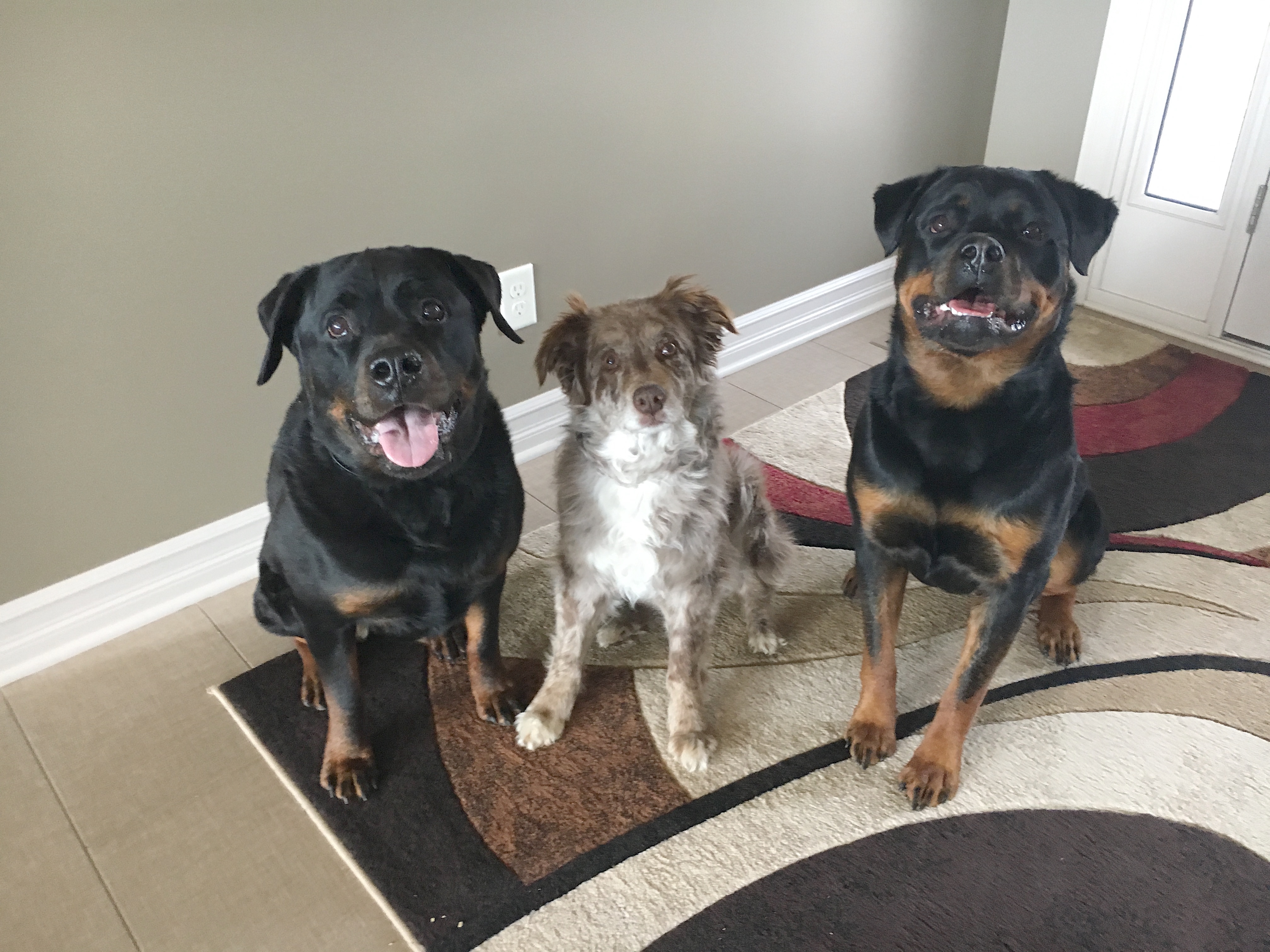Tips Help an Excited Rottweiler Calm Down for Walks
By: David Codr
Published Date: April 11, 2018
For this Omaha dog training session, we worked with Roxie, a 9-year-old Rottweiler, Ruby an 11 year-old Australian Shepherd and the newest addition to the home Zoey, a 1 year-old Rottweiler who is acting aggressively toward other dogs, pulls on the leash and gets over excited for walks.
The dogs were all pretty excited when I first arrived but it didn’t take a Dog Behavior expert to see that Zoey was the puppy of the group. She romped around harder than the other dogs and was far more “up front” than her more mature roomies.
I spent the first part of the session sharing tips on how to help the dogs see and respect the humans as authority figures. Like many guardians, they inadvertently taught the dogs that misbehavior was a good way to get attention. Even though this attention came in the form on corrections, to dogs, recognition is validating, even when its “bad.”
I showed the family how to pet the dogs for desired behaviors and ask for a command before petting them in other situations. This type of positive dog training teaches the dogs to do things we like as they are now recognized and receive attention. If the humans spend the next moth petting with a purpose and doing passive training, they will develop good habits that result in a mini dog training session each time they pet their dogs.
Next I went over a number of tips to help any dog behave on walks. Not only was she over excited, she was somewhat dog reactive. I wanted to show the humans how to do some positive leash training to stop her from pulling on the leash and a trick to help dogs stay calm before walks.
Hopefully these dog walking tips will stop the dogs from pulling on the leash and allow the humans to throw away the pinch collar they had been using. Many people think pinch or prong collars are great because they immediately reduce the pulling. But this reduction usually is temporary and comes with a big price; increased stress and anxiety in the dog.
The negative psychological impact pinch collars have on dogs is one of the reasons I don’t like or use those tools. The other is due to their design. These collars work by causing pain or discomfort or the threat of it. In dog behavior, we work to teach the dog to want to do what the humans want via positive reinforcement. After working with thousands of dogs, Ive never needed to use one of those collars.
If the guardians want to teach the dog to walk with a loose leash or heel, I mentioned we offer in home dog training and will soon be offering dog daycare training. Being a powerful breed, teaching a dog to walk next to you makes the activity much more enjoyable for the canine and human.
To help the guardians remember all the dog behavior tips I shared in this at home dog training session, we shot a roadmap to success video.
Categorized in: Dog Behavior


